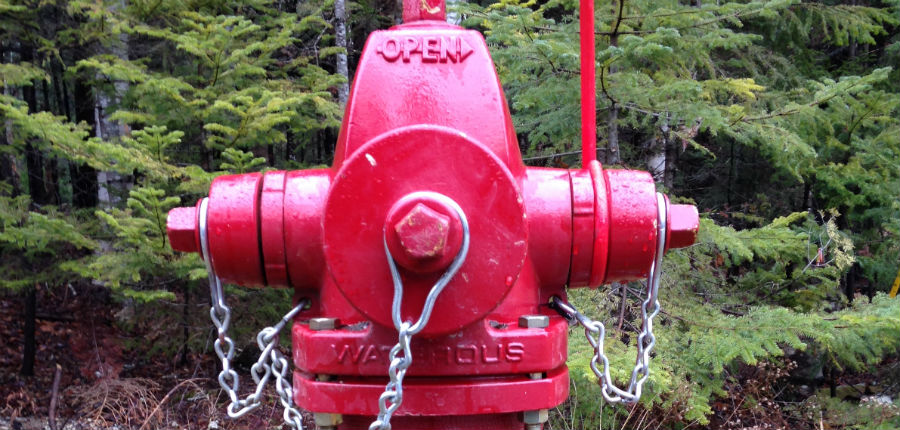
Water Supply Source
A water supply system must be designed to provide water of adequate quantity and quality for the proposed use. A water supply system consists of the water source, pumping systems, water storage tank, the transmission or distribution system, and may also require a disinfection or treatment system. Every potable water supply source has a source protection area surrounding it. The size of the source protection area (SPA) is a function of the demand, or quantity of water that the source provides. The shape and location of the SPA is a function of where the water source obtains its recharge. Small scale water supply systems, such as a single family residence, rely on a predefined shape to define the source protection area, whereas, larger water supply systems require the SPA to be defined by a site specific study to define and map the SPA. Any potential source of contamination in close proximity or within the SPA must be identified, since they could adversely impact the water quality. Similarly, having multiple water sources in close proximity to each other could result one well interfering with the ability of the other to deliver the quantity required.
Water Supply Design and Permitting
Water systems are classified as public water supplies or non-public water supplies. Public water supplies are further classified as community or non-community water supplies. The regulations related to the design, permitting and operation of a public water system are dependent upon the water system’s classification. In general, the larger the system, or the more users on the system, or if the system consistently serves the same users, the system design becomes more complex and additional regulatory compliance is required.
A water supply serving a single family residence is an example of a non-public water system. A licensed well driller installs the residential well in the location shown on the wastewater permit or subdivision permit. The well driller confirms that the well provides sufficient yield to meet the typical demand of a residence by doing a yield test and files a well completion report.
Public Community Water systems, are typically large scale systems serving a community such as a city, town, or district within a municipality. Their design and permitting require careful planning and implementation. Bottled water facilities are considered public water systems and are permitted in a similar fashion to Public Community Water systems.
Public water supplies, such as those serving inns and hotels are classified as Transient Non-Community systems, (TNC) since the users of these systems are transient, and it is not serving a community of people. Non-Transient Non-Community (NTNC) water systems regularly serves at least 25 of the same people (users are non-transient) for 6 months or more per year. Schools and office buildings are examples of an NTNC system.
